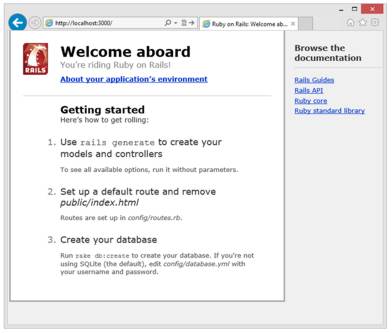| The Red and the Blue - Azure SDK for Ruby |
| Written by Kay Ewbank | |||
| Thursday, 09 May 2013 | |||
|
Microsoft has released an Azure SDK for Ruby, adding to the list of languages you can use with Azure - so how does red mix with blue? The SDK is being backed up with Ruby client libraries, PowerShell tools, and command-line tools for Mac and Linux. There’s a set of tutorials on the Windows Azure Ruby Developer Center website showing how to carry out a variety of tasks such as managing and analyzing data, storing data in blobs, and using message queues. There’s also a tutorial showing how to deploy a Ruby on Rails-based web site to a Windows Azure Virtual Machine using the open-source tool Capistrano, and another showing ) how to host a Ruby on Rails-based web site on Windows Azure using a Linux virtual machine.
While the SDK is useful, you can in fact host Ruby projects on Azure without using an SDK, by making use of the fact that Azure has been released as an Infrastructure-As-A-Service (IaaS). However, the SDK means you can make use of Azure Data Management and the Service Bus. The data management gives you access to Azure tables, blobs and queues, while the service bus handles message queuing. In a blog post about the SDK release on Microsoft’s Silver Lining open source development blog, Larry Franks says: “For hosting Ruby web applications on Windows Azure, the officially supported method is to use a Virtual Machine running Linux. You can still use things like RubyRole to host a Ruby application in a Windows-based Cloud Service, however those aren't officially documented/supported.” Microsoft’s release of the Ruby SDK is another example of the drive to make Azure attractive to developers using all languages, devices, and platforms. The SDK is open source and hosted on GitHub.
More InformationWindows Azure Ruby Developer Center Related ArticlesRubyMine The Right Way To Do Ruby Getting Started With Ruby - A Functional Language Getting Started With Ruby: Object-Oriented Approach
To be informed about new articles on I Programmer, install the I Programmer Toolbar, subscribe to the RSS feed, follow us on, Twitter, Facebook, Google+ or Linkedin, or sign up for our weekly newsletter.
Comments
or email your comment to: comments@i-programmer.info
|
|||
| Last Updated ( Thursday, 09 May 2013 ) |



